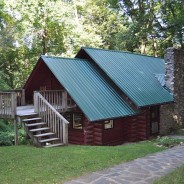Posted by Diane Morrow on January 16, 2022 in Blog, Healing Places, Uncategorized

I have found a cure cottage come to life in a piece of fiction. Everything, thinks Elizabeth, is in order. Ms. Barrett continues: Everything is as it should be, exactly as she would wish it: nine o’clock, on this December day in 1905, and already breakfast has been cooked and served and cleared, Livvie and Rosellen are at the dishes, and all nine of her boarders are resting, wrapped in blankets and robes, on the lower veranda or the private porches of the upstairs rooms. In the light, airy dining room, the new napkins look well in their rings and the cloth is crisp on the table. In the kitchen—the girls look up as she walks by, smiling without interrupting the dance of dishes passing from basin to basin and hand to hand—and also in the mudroom, the woodshed, the smaller shed where the laundry is stored in enormous lidded crates until the boilers are fired up twice each week, everything is as it should be for this hour and minute of the day. There’s a sense of healing place. A sense of order. And a sense that Andrea Barrett has all the time in the world in which to tell us about it. Because of the sensory detail, the rhythm of the prose, I feel my mind slowing down as I read. I feel myself drawn into this world, imagining it. Beginning in the Adirondacks, the story moves back and forth in place, and time, tracing the lives of two women as they come together to run this boardinghouse. Elizabeth, the housekeeper. Nora, the nurse. Nora begins her training in Detroit with a root-and-herb healer Fannie, first living in Fannie’s spare room, going out with her to collect herbs and roots, drying the herbs and roots in her kitchen, making house calls to the sick, then working for a time in a Soldier’s Home with civil war veterans, before making her way to the Adirondacks, her brother’s inn, and beginning to “doctor” the consumptives who have come there to stay. She tries to explain to her brother about this work she’s found: ‘This is what I’m meant to do,” she said—although the swiftness with which it came about had taken her by surprise. ‘It’s what I learned while we were apart, it’s how I make use of myself.’ Elizabeth, the younger of the two women, first makes her way to the Adirondacks with her mother, Clara, arriving that first summer at the inn where Nora lives with her brother. Over time, Elizabeth, still a young woman, attaches herself to Nora, and the two women create together the cure cottage, working together for seven years before Nora dies and Elizabeth continues to carry on the work in her absence. The story opens with the cottage. It also closes with it. There’s a nice sense of symmetry—and of culmination. Elizabeth’s point of view. Elizabeth’s discovery. A wonderful play on the word cure-cottage. What the house itself has come to mean for her. Here is her house. Not a duty, but her living self. It is as if, she thinks, as she moves toward Martin and Andrew and all the others up the walk and the clean brick steps, her hand reaching of its own accord for the polished brass knob in the four-paneled...
read more





